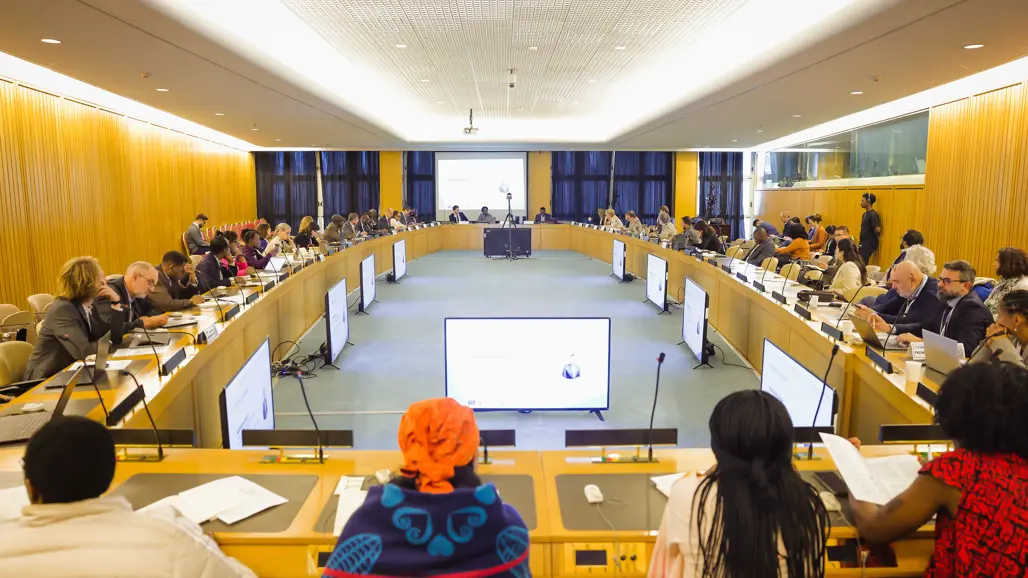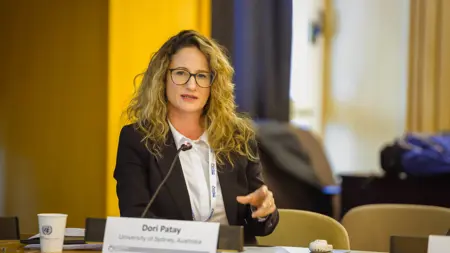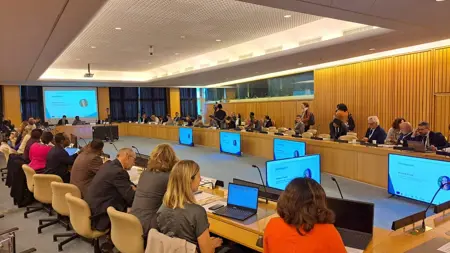
Is multisectoral governance a reality in food systems, and is it delivering results?
This question framed the debate on how multi-sectorial governance can scale up impacts of investment during a side event at the UNFSS+4 stocktake meeting arranged by the EU and Cameroon and facilitated by the SASi-SPi initiative.
Beyond repeated claims and commitments for a multisectoral governance of food system, meaning that the different policy objectives of a country should be thought together and implemented in a coordinated way between different ministries, can we find indications that this multisectoral governance is being implemented on the ground? What shapes does it take? With what results?
Multisectoral governance is taking shape
Dori Patay[1] presented the main results of a review of ongoing multisectoral governance at national scale where they found that 34 countries over 197 analysed had engaged into different types of multisectoral governance processes and they organised a mapping of this governance crossing two criteria: (i) the actors in charge of the multisectoral governance (state actors only or state and non-state actors ); and (ii) the nature of the participatory process (more or less integrated and more or less inclusive). The findings highlighted that inclusive structures, tailored to context, are not only possible, but essential for delivering food systems that are resilient, equitable, and responsive to local needs. Multisectoral governance is slowly taking shape.

The EU and the European countries and agencies within the Team Europe dynamics are playing their role in this multisectoral governance combining support to agricultural agroecological transition and investments in other sectors like energy provision and support to blended finance. Philippe Le Clerc (EU DG INTPA) highlighted this support and the need for evidence-based knowledge for this multisectoral governance.
This multisectoral governance is also taking advantage of a shift in international financing of development from assistance-driven & crises-fixing conception of aid[2] toward investments and international finances serving a national and consistent forward looking objective, according to Abdihakim Ainte (Prime Minister office, Somalia).
Despite these advances, important barriers remain. Fragmented collaboration, power imbalances, insecure land tenure, and limited space for local voices continue to slow progress. In addition, involving trusted community leaders and informal governance structures was recognised as an important step to building inclusive and effective governance.
Convergence of policies, a concrete example of multisectoral governance
Convergence of policies is one of the most challenging but essential goal of the food system transformation. As long as food policies will be designed with the only perspective to deliver food and environmental policies will be designed disregarding productivist objectives, both will thwart each other. Nevertheless, the convergence has moved from an idea (2021) to a policy formulation in several countries, at different speeds and with different shapes.
The example of Cameroon is one of the most advanced in this policy formulation with a detailed national strategy base on three pillars (rice, agroecology and import substitution), each of them baring both climate and productivity objectives and on different projects formulations (Grace Mbong, Secretary General, Ministry of Agriculture and Rural Development of Cameroon).
Madagascar is another example of well-advanced implementation of the convergence initiative through agroecology in particular (Ianja Roalisoa, Ministry of Agriculture and Livestock)[3]. They have established a national task force to coordinate multisectoral efforts in the implementation of the national food systems transformation pathways, led by the Ministry of Agriculture and including UN agencies, civil society, and the private sector.
In Thailand, an example of innovative transformation of the rice value chain fits the double objective of the convergence. Philipp Knill, Director for Africa at the BMZ, presents this project aiming to mitigate methane emissions and that involves collaboration with the Thai government, Green Climate Fund, Germany, and the private sector. The multi-sectoral cooperation, governance, and the role of women and the private sector play a key role in building sustainable and resilient food systems.
Financing the multisectoral governance at scale
Several participants emphasized that innovative financing tools (e.g., impact bonds, de-risking mechanisms, blended finance) are essential to attract private sector investments and support long-term food systems transformation. Some of them presented examples of such on going fundings. Sara Mbago-Bhunu from IFAD, presented a $50 million bond focused on nutrition and climate support for smallholder cooperatives, with 60% of financing dedicated to nutrition goals by 2027, resulting from a partnership with the Agricultural Cooperative Insurance Federation of Japan. She also shared results from a rural finance program in Zambia that provided digital financial services to 650,000 households, leading to a 65% increased dietary diversity, 80% income growth, and a reduction in child mortality from 26.6% to 4.1%. Conrad Rein presented the Global Flagship Initiative for Food Security, a 5-year initiative launched in Saudi Arabia with over 50 members, aiming to shift perceptions of risk in food systems investments and promote public capital that creates opportunities rather than just filling gaps.

Still, many speakers stressed that coordination remains the missing piece. Mapping who finances food systems, and how, is essential to align efforts with shared goals such as nutrition, equity, and sustainability.
Attracting finance is not only a question of designing the right tools, but also greatly a question of global economic dynamics and economic stability. Social dynamics like local actors mobilisation is also crucial. Smallholders, civil society, and farmers’ organizations as co-designers of food systems governance are another critical aspect of upscaling transformation, like in the NL funded project seedNL (Wampie Libon, Ministry of Foreign Affairs, The Netherlands). Successful case studies highlighted the importance of empowering communities. For example, farmers’ markets, often operating outside formal governance structures, were described by an audience member as “sleeping giants” that already connect producers and consumers across countries, yet remain largely overlooked in current investment strategies.
In addition, investments will not solve all the problems of food security in the world and the multilateral framing and financing of food system policies remains necessary. Raoul Mille, Scientific Adviser to the Permanent Representation of France to the UN in Rome, suggested a renewed approach rooted on UN agencies cooperation, equitable North–South collaboration and science-based policy, were both investments and multilateralism will have a synergetic role.
New architecture
Tristan Le Cotty, Cirad who is also part of the SASi-SPi team highlights after the side event that since 2021, people involved in the agrifood systems transformation have spent tremendous efforts in building the intellectual architecture of this transformation, leading to the multisectoral governance, convergence of formerly independent policies, and co-financing the transformation.
- This architecture is now helping frame concrete examples of multisectoral projects, convergence technologies, multi-actor finances and coordinated policies in various countries which gives us concrete images of this transformation like in the rice sector, it gives hopes that we are not just running after a mirage, and it gives us ideas for science for decision, and Science/policy interface for decision, the SASi- SPi project.
The event was moderated by Francine Picard, Secretary of the UNFSS Zero Hunger Coalition and founder of the Shamba Centre for Food and Climate, and concluded with a clear recognition that multisectoral governance is, indeed, a reality in food systems, though it remains a work in progress and facilitated by the SASi-SPI with an immense help from Jose Luis Vivero from World Food Program in Cameroon.
[1]Patay D., Rippin H., Ares G., Reeve E., Venegas Hargous C., Farrell P., Reeve B, Vivero- Pol J.L, Thow AM, 2025. A global mapping of multisectoral food system governance institutions, Policy Brief.
[2] Despite receiving $13 billion in international aid since 2002, Somalia remains trapped in cycles of food insecurity and dependency
[3] participatory agroforestry systems that improved incomes by 30% and improved soil quality, achieved by involving local farmers in the design process
Contact
-
PersonKonstantinos Karantininis, ProfessorDepartment of People and Society